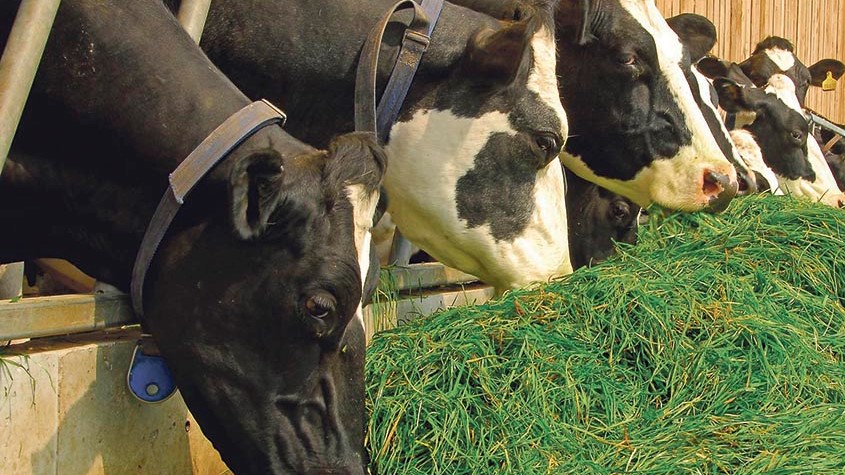- Empty cart.
- Continue Shopping
Cattle for Milk Production

In Uganda today, money can be earned from agriculture in many various ways and one excellent way is selling milk for home and industrial consumption. In industries, milk is a raw material for production of most bakery and confectionary products, it’s also used in processing of milk products like processed milk,butter, Yoghurt,Ice cream,ghee,cheese among others. Similarly,homemade products likebutter,ghee are also a source of income.
All cows produce milk after calving however the quantity and composition of milk yielded makes a distinction between diary and non-diary animal breeds. Dairy cows are differentiated by either quantity of milk or butter fat content.
The commonly known breed for producing high milk amounts is the Friesian breed (Holstein) capable of producing about 40-60 liters a day. Besides the Friesian breed,Brown Swiss,Jersey,and Guernsey which are mainly propagated through artificial insemination techniques are popularly getting recognized in Uganda for producing concentrated milk(high butter content) .These breeds produce about 20-30 liters of concentrated milk per day.
Analysis of fat and protein content in Diary cattle
Breed % Fat % Protein
Ayrshire 3.86 3.18
Brown Swiss 4.04 3.38
Guernsey 4.51 3.37
Holstein(Friesian)3.65 3.06
Jersey 4.60 3.59
Land Required for Rearing cattle for Milk
Land requirements for a dairy cattle depend on the rearing methods. One of the methods commonly used for dairy cattle isZero grazing where cattleare taken care of from within the animal house. The roof of this house is raised on wooden or metallic stands, high enough to about 4-5meters from the ground. This is meant to shield the animals from direct sunshine and rain. The sides are kept open for efficient ventilation. Feeds and water are provided in the troughs and there is no direct contact with the grazingland. A space of 1.2 meters width, 4.5meters length and the height of raise has to be 2meters from the ground peranimal is provided.
Another method of rearing is paddocking where animals are kept within a fenced area called a paddock. Within a single paddock pasture is always available and water points properly arranged for animals to access.
NB: Free range and tethering methods are not advisable in diary production for cattle rearing for they are considered traditional methods and not result oriented.
Diseases which affect Diary producing Cattle
Dairy cattle are just like any other breed, and are affected by the same diseases.Nevertheless there are some specific diseases and conditions that are known in dairy cattle.
Mastitis
The primary organ affected is the udder.Mastitis develops if the teat canal is open normally after milking and exposed to disease causing organisms.Mastitis is mainly causedby bacterial micro-organisms known as staphylococcus, coliforms and corynebacteria. Mastitis has two forms subclinical or chronic and clinical or acute mastitis. Sub clinical is mainly considered the first phase and it is silent and doesnot show any visible clinical signs unless the animal is tested by a veterinarian. The animal incubates the disease with the udder consistence and appearance of milk being normal. It is called chronic because it takes a lot of time to be evident and if not properly diagnosed or examined, later progresses into the second phase called clinical or acute mastitis.
Clinical mastitis is considered acute because of onset pre-dominant clinical signs which include;
• Udder swelling and hardening
• Pus or blood from teat canal on milking
• Increased body temperature
• Pain manifestation during milking
• Hotness felt on palpation of the udder
• Increase in body temperature
• Reduced milk production
Prevention of Mastitis
Improve the hygiene:
• Of the cattle’s environment by removing dung so as to avoid dampness, keep the animals on a clean non slip concrete floor
• Of the milkerby making sure they wash hands properly with an anti-septic like Dettol
• Also Sanitize the udder before milking by physically cleansing the udder, then wash with an antiseptic and dry it with a clean sterile towel before milking.
• Deep the teats in Iodine after milking to help protect the opened teat canal as milk was being let down on milking.Iodine can be got from veterinary pharmacies.
Treatment
• Use intra-mummeries for treatment which include Gentamast tubes .These can be purchased from veterinary pharmancies.
Milk Fever
This is caused by lack of calcium in the body especially after calving (It shows after calving because the animal losses a lot of calcium in the milk.
Signs and Symptoms
They are in 3 stages
Stage 1;the cow is mobile with;
• Hypersensitivity
• Restlessness
• Tremors
• Ear twitching
• Head bobbing
• If not managed, it progresses to the second stage
Stage 2;
• Cow can no longer stand
• Weakened heart contraction
• Cow appears dull
• Dried muzzles
• Cold extremities
• Lower body temperature
• Smooth muscle paralysis which can cause bloat, inability to defecate or urinate
• Cows often tuck their heads in their flanks
Stage 3;
• Lateral recumbence (Lying on the side)
• Unresponsiveness to stimuli like piercing (inflicting pain)
• Unconsciousness
• Coma
Prevention
• Increase calcium levels in the diet especially in the last month of gestation (the gestation period of a cow is 9 months). However in the last two weeks of the ninth month, withdraw the external calcium sources to let the body mobilizeits own calcium after delivery.
• Administer dextrose or glucose fluid therapy intravenously (IV), and after givecalcium (calciject) IV to the recumbent cow about 500mls. The animal will immediatly urinate and stand in the next 5-15minutes.NB: contact a veterinary doctor to give the treatment.
